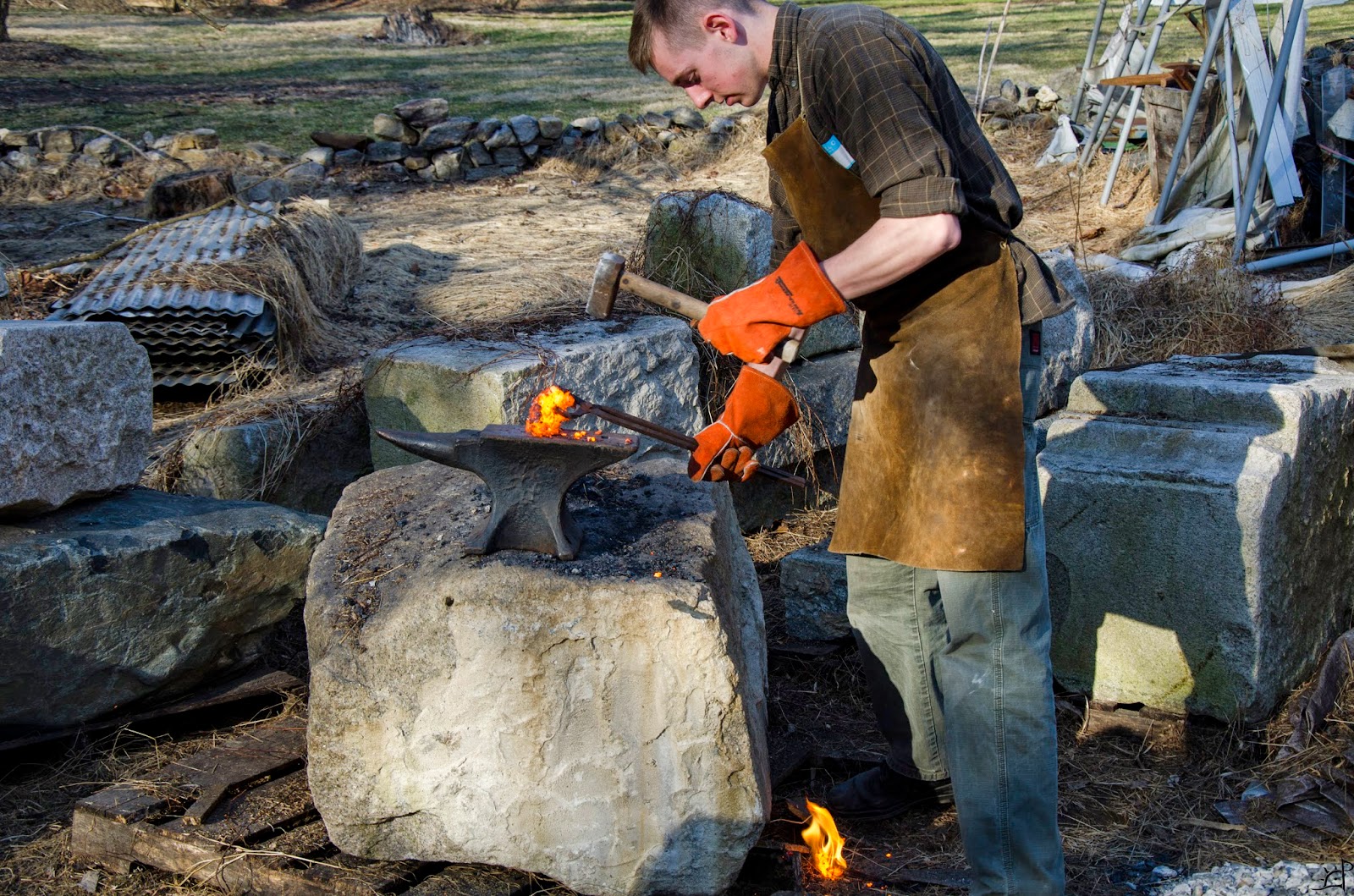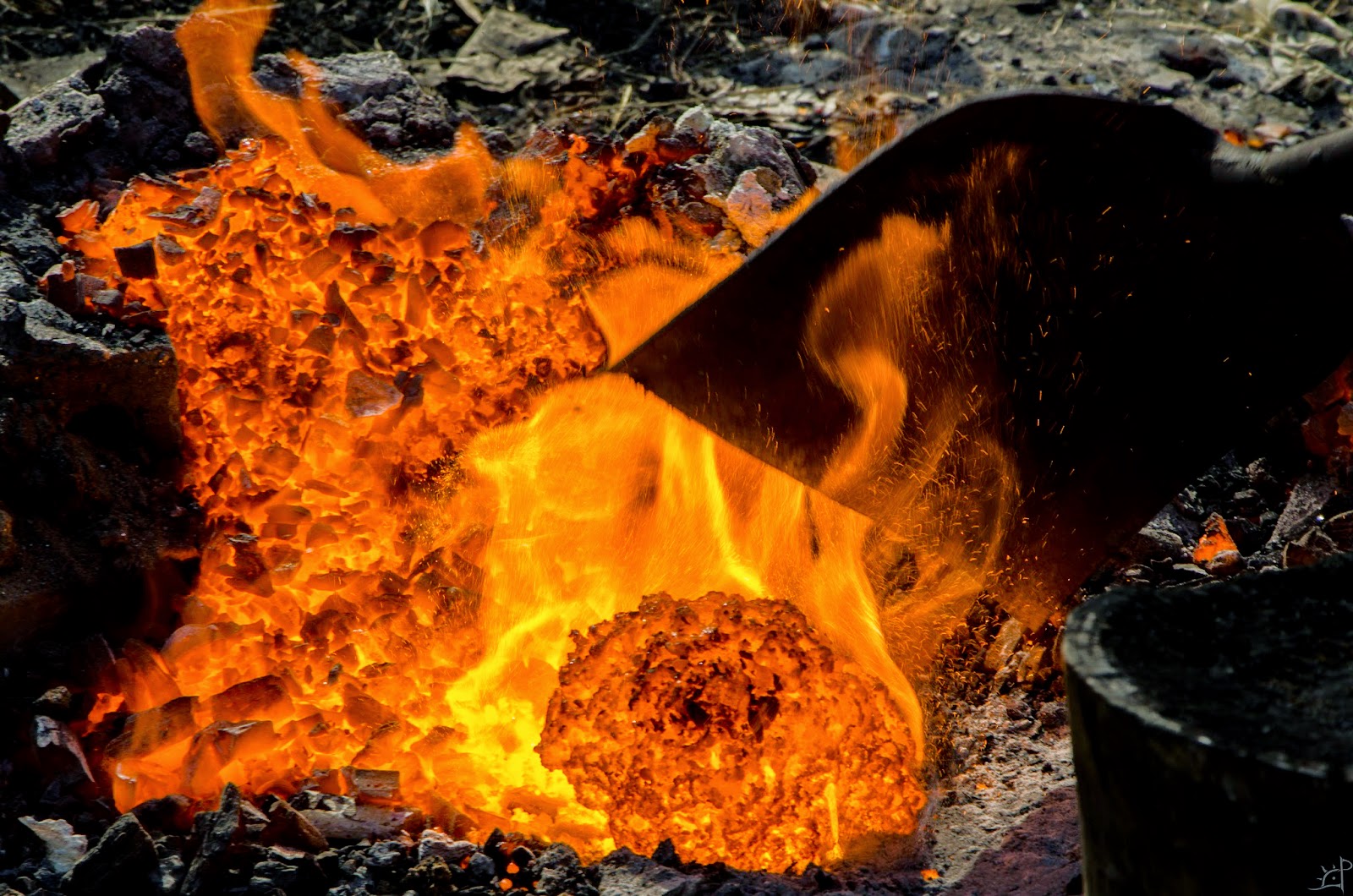Through fire, I can watch as the world is reborn from its pure, raw form. Impurities bleed from metal as it is melted down, forged back into form and function through the labour of purpose. I am not a cold hearted machine, nor a code in a computer, but flesh and blood that remembers a time when value outlasted the latest model or the newest software. Will an edge cut any less true because foundry produced a better alloy? Will the hundreds of years of its use in society be obsolete? Always will there be a standard to be beaten, a record to be broken, or a property to be out performed; such is the character of nature.
When I first began down the long road of craftsmanship, a journey which I firmly believe is inherent to the nature of humanity and only needs to be explored, it was with the intent of forming a connection with the past and to divert my own course from the disposable lifestyle growing around me. In the beginning, it was a satisfaction of curiosity and exploration of how I could truly begin to produce something that would hold a lasting quality and virtue beyond what simply money can be used to buy. However, that was but a waypoint to a deeper fulfilment. Soon I became transfixed with the materials I used and their origin. The process of making steel from ore, from other steel, from things that were never meant to be transformed into my design, it showed me an insight which I hope I never lose.
Material has soul. There exists an inherent connection between what it was and what it has become. Often, the face of its prior life is all but invisible through the deliverance to perfection. Flaws are vile, not an attribute of character. Anything old is obsolete. If it does not seem new, then it must not be. Yet that is not how it must always be. Life in the natural world has a way of preserving the lost from becoming forgotten, and through fire I can emulate this. In labour and care I can transform what so easily can become just another number added to the waste of humanity's history, salvaging the soul of its past as a reminder of what the world so dangerously approaches.
Thousands of paths exist to begin the journey of a lifetime's work, yet the proverbs say it must begin with a single step. To which one, it does not matter, so long as it leads to the proper places.
In the fires of creation, countless bottlecaps melt away as they shed their masks and reveal what was hidden beneath. Unshapen, unprocessed, so fundamental in the potential to become anything else. However, the destiny of this steel was fated long ago.
Beneath the inferno a primordial transformation occurs as form fades away. Rivers of fire bear the character but not the faces they once wore, now released to the freedom to become anything. Anything but a rusting mass buried with yesterday's refuse.
Like a meteor from the heavens the glowing mass is reborn, so reminiscent of how it once began a different path. Knotted and gnarled and embedded with scorched rubber and bits of charcoal, it sits now raw in all senses of the word.
Shaping the mass takes time and energy, but it cannot be any other way. Not even does nature itself defy those laws it demands. Worked by hammer and anvil, the metal can take form to the design of its caretaker; to call myself its creator would be so narrow minded and selfish, for all that we truly create are ideas, and they too are but interpretations of the world around us.
Unlike the industrial processes which transform material from form to form, I can work this steel for days upon days, and it will never truly lose those qualities which define it from its past. The grain and to some degree its impurities, the patterns of the alloys and its resistance to forsaking its old identity will remain with it longer than I can imprint my own mark upon it.
Nearly a year ago, I wrote some thoughts I had on the nature of possession, yet this stems from a more primal sense of empathy and fear for our kind. Remarkable it seems to me that, no matter the religion or belief we hold, so many cast their effort and allegiance to the one who created all things without care for the reason why. If that question continues to exist unanswered in the hearts and minds of man, the beauty of the world will never cease to fade until there is nothing left behind but a memory of better times. Whether creation began as a paradise for mankind or a singularity of nature, it is too beautiful and extraordinary a thing to destroy for the selfish causes of want and satisfaction. Countless generations have lived upon the same earth and beneath the same stars, yet how many more will it outlast?











































